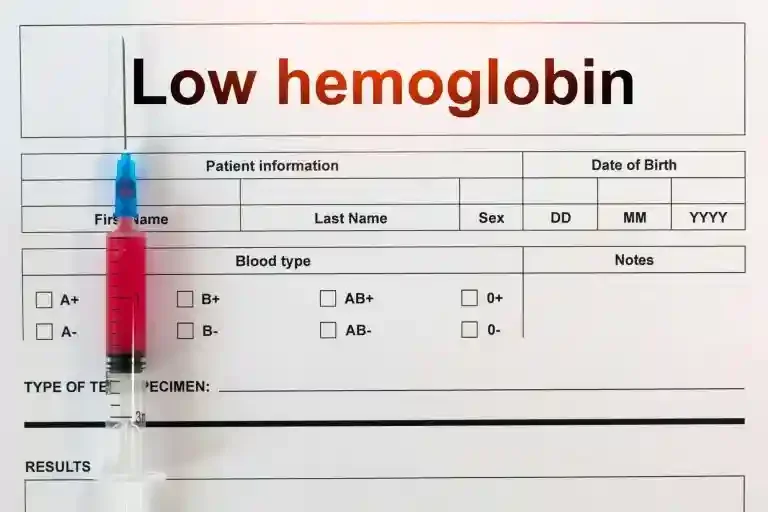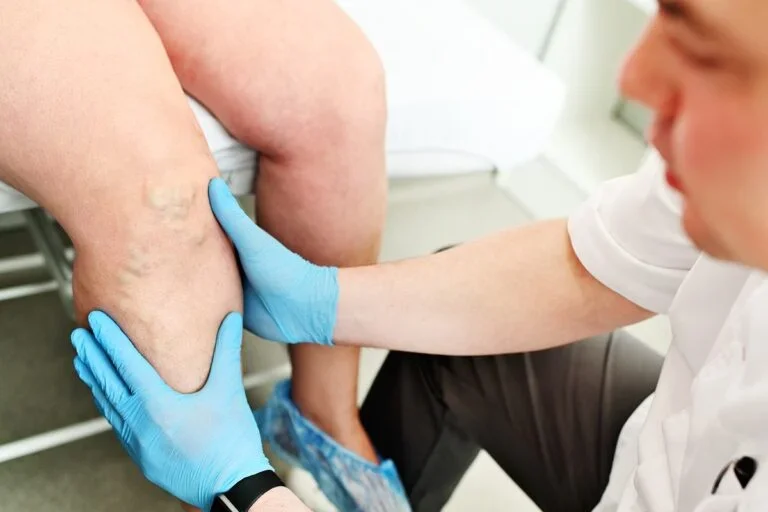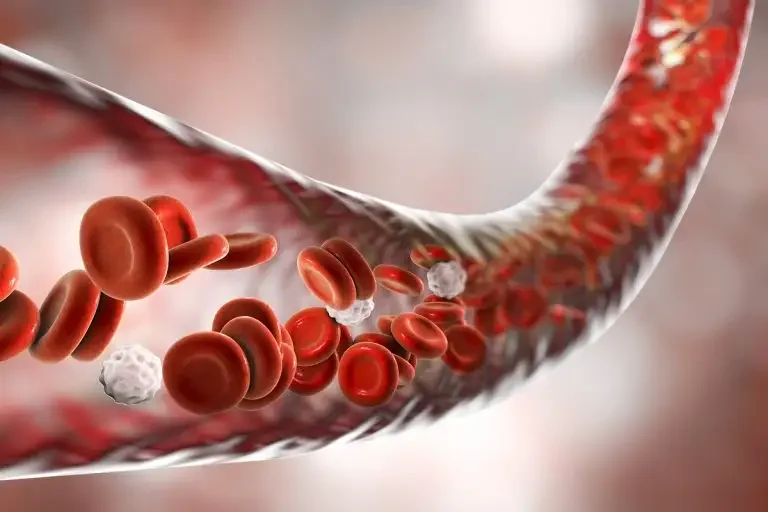What is Low Hemoglobin?
Hemoglobin is the protein present in your red blood cells. The red blood cells transport oxygen throughout your body. Oxygen is your energy source, and it fuels the cells. When your body’s capacity to produce red blood cells is hampered by a disease, the hemoglobin level can decrease.
- A low hemoglobin level is referred to as anemia, which can result from either a decrease in red blood cells or a reduced amount of hemoglobin in the circulatory system.
- This condition limits the oxygen delivery to tissues through the blood, causing weakness, fatigue, and shortness of breath.
- Low hemoglobin common causes include iron deficiency that affects hemoglobin creation in the body, chronic disease, such as cancer or kidney failure where red placenta cell formation decreases, and severe bleeding due to injury or monthly periods.
- Sickle cell anemia is also a genetic disorder that causes low levels of hemoglobin.
Causes of Low Hemoglobin
Several factors can contribute to inadequate hemoglobin amounts, including:
- The number of red blood cells your body produces is inadequate. The red and white blood cells form in your bone marrow. At times, diseases and ailments can lead to insufficient production or maintenance of red blood cells in your bone marrow.
- Long- term illnesses that impede the ability of blood to produce sufficient numbers of red cells can cause anemia.
- Iron, vitamin B12, and folate are essential nutrients, which participate in the synthesis of hemoglobin. Deficiency in any of these nutrients can lead to anemia.
- Among the inherited conditions that interfere with hemoglobin production or structure are sickle cell anemia, thalassemia, and others.
- Acute and chronic loss of blood can cause anemia. An accident, surgery, or childbirth may cause acute blood loss, whereas disorders, such as heavy monthly bleeding and gastrointestinal bleeding are followed by chronic blood.
- Reduced red blood cell production often results from deficiencies of bone marrow function, which could lead to aplastic anemia or myelodysplastic syndrome.
- Diseases like rheumatoid arthritis or inflammatory bowel disease interfere with erythropoiesis.
- During pregnancy, the female body produces more blood which helps to maintain a growing fetus. Anemia can develop if the demand remains higher than what the body is capable of meeting.
Symptoms of Low Haemoglobin
The severity and etiology of anemia influence its symptoms. A patient may initially have no symptoms from anemia due to its mildness. On the other hand, when the anemia worsens, symptoms of low haemoglobin often start to appear. Anemia symptoms may be concealed by another illness if that illness is the source of the anemia.
Among the possible signs of anemia are:
- Feeling unusually tired or weak even after adequate rest
- Difficulty breathing, especially during physical exertion or activities
- Skin, lips, and nails may appear noticeably pale or have a whitish hue
- Feeling faint, dizzy, or experiencing sensations of spinning
- Rapid or irregular heartbeat
- Cold hands and feet
- Problems related to growth in kids and teenagers
- Frequent headaches or migraines
- In severe cases, chest pain or angina
Treatment of Low Haemoglobin
Your anemia type will determine how you are treated. Following are the common treatment of low haemoglobin:
- You may require medicine, blood transfusions (where you receive blood from another person), or a bone marrow transplant (where you receive stem cells from a donor) if you have aplastic anemia.
- You may require medicine to suppress your immune system if you have hemolytic anemia. A doctor that specializes in vascular issues may be recommended to you by your primary care physician.
- If blood loss is the cause, surgery may be necessary to locate and stop the bleeding. You may be advised to take iron supplements and adjust your diet if you have iron-deficiency anemia.
- Treatment options for sickle cell anemia include oxygen therapy, folic acid supplements, occasional antibiotics, and opioids.
- You will be given supplements if you are deficient in vitamin B12 or folate.
- Treatment for thalassemia is normally not necessary, but in cases when it is severe, you may require surgery, a bone marrow transplant, or blood transfusions.
- Taking iron supplements and altering one’s diet are common treatments for iron deficiency anemia.
Diseases Associated with Low Hemoglobin
Diseases and conditions that cause your body to produce fewer red blood cells than normal include:
- Aplastic anaemia
- Cancer
- Certain medications, such as anti-retroviral drugs for HIV infection and chemotherapy drugs for cancer and other conditions
- Chronic kidney disease
- Cirrhosis (scarring of the liver)
- Hodgkin’s lymphoma (Hodgkin’s disease)
- Hypothyroidism (underactive thyroid)
- Iron deficiency anaemia
- Lead poisoning
- Leukaemia
- Multiple myeloma
Diseases and conditions that cause your body to destroy red blood cells faster than they can be made include:
- Enlarged spleen (splenomegaly)
- Sickle cell anaemia
- Thalassemia
- Vasculitis (blood vessel inflammation)
What are Causes of Bleeding Loss?
- Bleeding from a wound
- Bleeding in your digestive tract, such as from ulcers, cancers or haemorrhoid
- Bleeding in your urinary tract
- Menorrhagia (heavy menstrual bleeding)
1) Haemoglobin: A low haemoglobin result indicates anaemia which can have many causes including pregnancy, blood loss, liver damage, iron deficiency and much more.
Haematology is a branch in medicine that is concerned in analysing various blood components and blood forming organs (bone marrow, spleen and lymphoid tissues). The speciality is a tool used in treating blood diseases from anaemia to the blood (leukaemia), lymphoid glands (lymphoma and myeloma) and abnormalities of blood coagulation.
Wockhardt hospital offer the most advanced diagnostic technologies and treatments available for blood disorders .The department of haematology at Wockhardt is the branch of medicine concerned with the study, diagnosis, treatment, and prevention of diseases related to the blood. At Wockhardt Hospital the speciality is fully equipped in diagnosing the various different types of blood conditions that are looked at include anaemia, thalassemia, haemophilia, general blood clots , bleeding disorders, haematological malignancies such as lymphoma and leukaemia (cancers) as well.
At our centres, we have essentially a team of highly trained specialists, nurse clinicians, physical and occupational therapists who are all equipped to provide patients with care in the field of Haematology. We use the latest in pharmaceuticals and leading-edge technologies to help you win over diseases and live a normal life.
FAQs on Low Hemoglobin
Q. At what level is hemoglobin dangerously low?
Hemoglobin levels below 7 g/dL are considered dangerously low. Below this threshold, individuals may experience severe symptoms and require medical intervention to prevent complications.












